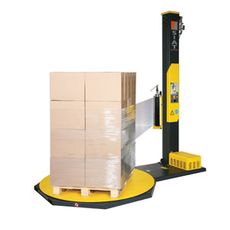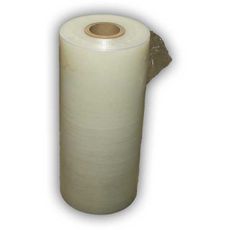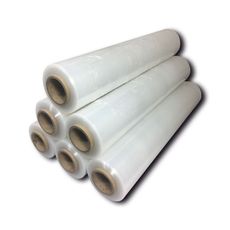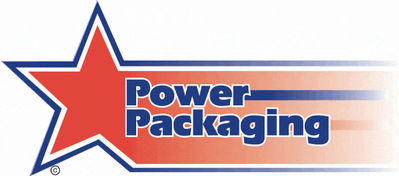Pallet Wrap: Everything You Need to Know
Cast Film |
|
 |
Cast pallet wrap, also known as stretch film, is a type of plastic wrap used to secure and stabilize items on a pallet during transportation. Made from a blend of polyethylene materials, it is stretched and wrapped around the items on the pallet, providing a secure hold while also protecting the items from damage. Cast pallet wrap is available in various thicknesses and strengths, making it suitable for a wide range of applications. |
Advantages of Cast Pallet Wrap
Disadvantages of Cast Pallet Wrap
|
|
| Pallet Wrap - Hand Black | |
| Pallet Wrap - Hand Clear | |
| Pallet Wrap - Machine Black | |
| Pallet Wrap - Machine Clear | |
Blown Film |
|
 |
Blown pallet wrap is a type of stretch film produced using a blown extrusion process. This process involves blowing heated plastic through a circular die to create a tube of film. The tube is then cooled and flattened, resulting in a stretchable film that can be easily wrapped around pallets and other large items to secure and protect them during transportation or storage. Blown pallet wrap is known for its high strength and durability, making it a popular choice for heavy-duty packaging applications. FAQs1. What is the main advantage of blown pallet wrap? Blown pallet wrap offers high strength and durability, making it ideal for heavy-duty packaging applications. 2. How is blown pallet wrap different from cast pallet wrap? Blown pallet wrap is produced using a blown extrusion process, which gives it superior puncture resistance and cling properties compared to cast pallet wrap, which is produced using a cast extrusion process. 3. Can blown pallet wrap be recycled? Yes, blown pallet wrap can be recycled, but it is important to clean it and remove any contaminants before recycling. Check with your local recycling facility for specific requirements. 4. Is blown pallet wrap suitable for outdoor use? Yes, blown pallet wrap is suitable for outdoor use as it is resistant to punctures and can withstand various environmental conditions. |
Advantages of Blown Stretch Film
Disadvantages of Blown Stretch Film
|
|
 |
Pallet Wrap – Blown Hand Film |
 |
Pallet Wrap – Blown Machine Film |
Fusion Film |
|
 |
Fusion high stretch wrap is made from high-quality materials, offering superior strength and extended stretchability. This new technology reduces your use of stretch film per pallet by over 70%, making it more cost-effective per meter. Despite being thinner than other stretch films, it maintains the puncture resistance of a much thicker film. Fusion high stretch wrap is truly the pallet wrapping product of the future. |
 |
Fusion Hand Pallet Wrap Clear |
 |
Fusion Machine Pallet Wrap 12um Clear |
 |
Fusion Machine Pallet Wrap 15um Clear |
What is Pallet Wrap Made Of?Pallet wrap, also known as stretch film, is a type of plastic film used to secure items on a pallet for storage and transportation. Made from a flexible, stretchable material, it easily wraps around items to hold them in place. The most common material for pallet wrap is polyethylene, a durable and lightweight thermoplastic polymer. Polyethylene’s excellent stretch and cling properties make it ideal for pallet wrap. It is also resistant to moisture, dust, and punctures, protecting items from the elements during transportation. Pallet wrap can be enhanced with additives like UV inhibitors to prevent degradation from sunlight exposure, increasing its durability and versatility. We also offer a range of biodegradable stretch wrap to complement our eco-friendly packaging solutions. Can Stretch Wrap be Recycled?Yes, stretch wrap can be recycled, but it is not as easily recyclable as other types of plastic. Stretch wrap is made of polyethylene plastic, one of the most commonly recycled plastics. However, its thin and flexible nature can cause it to tangle with other materials in the recycling stream, making it difficult to recycle. This can create problems for recycling facilities and limit the ability to recycle stretch wrap. To ensure stretch wrap can be recycled, it is important to clean it and remove any contaminants before recycling. Additionally, some recycling facilities may have specific requirements for recycling stretch wrap, so it is important to check with the facility beforehand. |
|
OTHER FAQ ON PALLET/STRETCH WRAP:
MACHINE PALLET WRAP:
What are the benefits of pallet wrap?
Pallet wrap protects the goods from dust, dirt, and moisture during transit. It also stabilizes the load and prevents it from shifting or falling off the pallet.
How does a pallet wrapping machine work?
A pallet wrapping machine secures the pallet in place while a turntable rotates it. Meanwhile, the film carriage stretches and wraps the film around the load, creating a tight and secure wrap. Please find available models on our pallet wrapping machine category page.
How many times should you wrap a pallet?
It is recommended to wrap a pallet approximately three to four times around the base area, as you work your way up make sure to overlap each layer and work your way back down to make sure it is secured.
What is the safe system of work for a pallet wrapper?
All personnel involved in pallet wrapping operations must be trained in the safe use of the pallet wrapper. Prior to use, inspect the pallet wrapper for any damage or defects that may affect safe operation. Ensure the work area is free of any tripping hazards, debris or obstacles.
HAND PALLET WRAP:
What is the difference between hand stretch wrap and machine stretch wrap?
Hand stretch wrap is applied manually, while machine stretch wrap is applied using a pallet wrapping machine. Machine stretch wrap is more cost effective and efficient than hand stretch wrap due to the longer rolls, less labour and roll changeovers.
What is the difference between stretch wrap and shrink film?
Stretch wrap is a stretchable plastic film that is used to wrap around a load to secure it to a pallet. Shrink film is a heat-shrinkable plastic film that is used to wrap around a load and then heated to shrink and conform to the shape of the load.
Which is better cast or blown stretch wrap?
Cast stretch wrap is more transparent and quieter than blown stretch wrap. Blown stretch wrap is more puncture-resistant and has a higher cling level than cast stretch wrap. Each has their own values in wrapping, however the quality of cast film in recent years has narrowed the gap. Power Packaging's cast film could be utilised in many situations where competitors blown film is being used.
